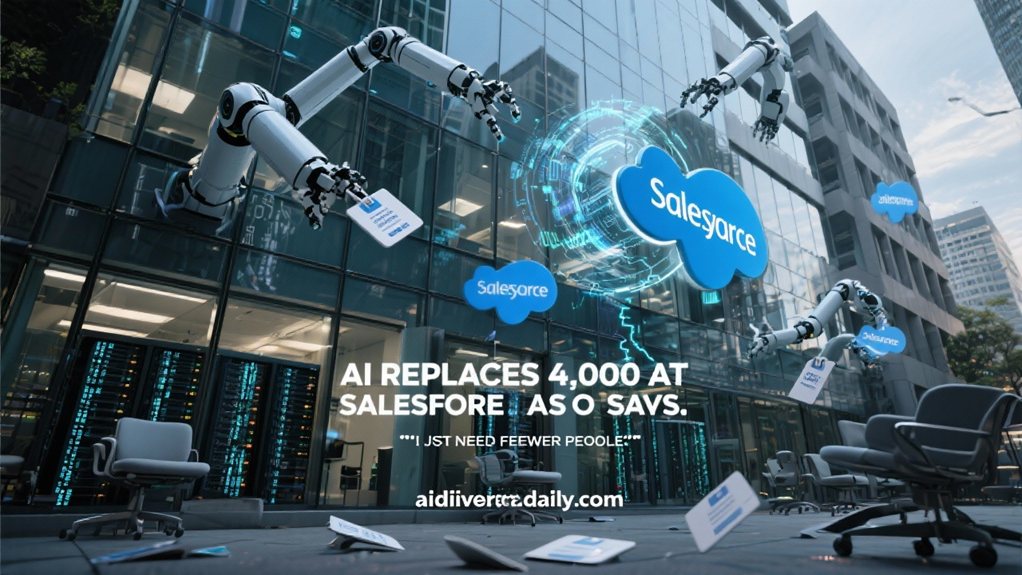Cloud & AI: Microsoft’s Trillion-Dollar Engine
While tech giants scramble to stake their claim in the AI gold rush, Microsoft has quietly built a fortress. The numbers tell the story. Microsoft’s Intelligent Cloud segment hit $26.8 billion in Q3 FY 2025, jumping 21% year-over-year. Azure? Even better. It soared 33% in the same period. That’s not just good. It’s ridiculous.
The secret sauce? AI. It contributed a whopping 16 percentage points to Azure’s growth. Microsoft isn’t just talking AI; they’re scaling it. They’ve doubled their capacity ahead of schedule. Performance per ISO power improved by 30%. GPU readiness times dropped by 20%. Cost per AI token? Cut in half. These aren’t vanity metrics. They’re cash generators.
Microsoft isn’t just riding the AI wave—they’re creating it, with halved token costs and doubled capacity transforming hype into hard revenue.
Commercial cloud bookings increased 18%. Enterprises aren’t playing around anymore. They see Microsoft’s AI offerings as essential tools, not luxury items. Businesses want results, period. And Microsoft is delivering. Their hybrid approach works for companies with complex needs. Their partnerships, like the one with OpenAI, secure long-term capacity commitments. Smart move.
The AI business itself? It’s reached a $13 billion annual run rate. Year-over-year growth sits at 175%. That’s not growth; that’s an explosion. Microsoft’s cloud empire now generates $42.4 billion quarterly, up 20% from last year. The company processed an impressive 100 trillion tokens this quarter, showcasing the massive scale of its AI operations. Even traditional segments feel the AI effect. Advertising revenue jumped 21%, fueled by AI-driven ad tech.
All this growth, and Microsoft still expanded operating margins. How? Cost discipline. They’re planning to ramp up capital expenditures in Q4 FY 2025. They have to. Demand requires it. The company’s AI solutions have shown productivity gains of up to 40% for their business customers. They’re streamlining dock-to-live times to roll out capacity faster. Every efficiency improvement snowballs into system-wide benefits. The company’s net income increased by 18% year-over-year to $25.8 billion, demonstrating the financial impact of their cloud and AI strategy.
The market has noticed. Microsoft trades at a forward P/E of about 37.7—nearly double its 20-year average. Some say that’s too high. Others point to the AI runway ahead. The debate rages on.
But facts are facts. Microsoft has positioned itself at the intersection of cloud and AI better than anyone expected. Their revenue growth isn’t slowing. Their technical innovations keep coming. Their enterprise relationships run deep. Could they hit $4 trillion? The path is clearer than it was yesterday. And in the tech world, momentum like this doesn’t come along every day.









